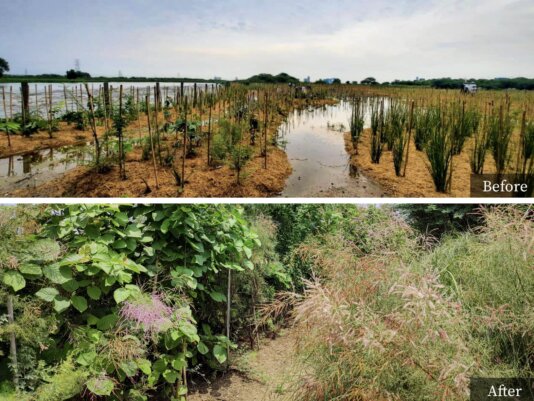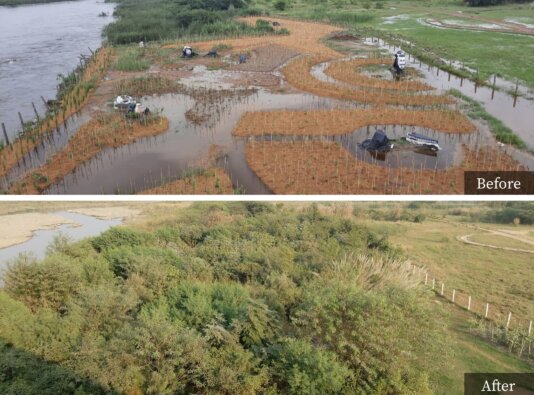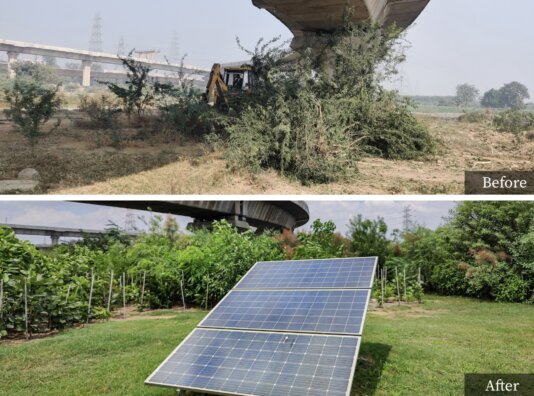- About
- Topics
- Picks
- Audio
- Story
- In-Depth
- Opinion
- News
- Donate
-
Signup for our newsletterOur Editors' Best Picks.Send
Read, Debate: Engage.
| August 01, 2023 | |
|---|---|
| topic: | Deforestation |
| tags: | #reforestation, #climate change, #biodiversity, #urban forests |
| located: | Japan, Pakistan |
| by: | Chermaine Lee |
In response to the growing concern over the climate crisis, there has been a global movement towards reforestation, resulting in the emergence of small urban forests in many parts of the world.
A relevant example comes from Lahore in Pakistan. Once called the 'City of Gardens,' Lahore has become one of the most polluted places on earth. To counter this, Prime Minister Imran Khan launched a reforestation project in 2021. Dubbed the world's largest Miyawaki urban forest, its goal is to create a dense forest that will filter pollutants and provide other benefits like carbon sequestration, soil conservation, and biodiversity conservation.
The Miyawaki forestation method has been practiced for decades. It was developed by a famous Japanese ecologist who discovered a way to reconstruct forests using indigenous species more quickly than conventional methods. The late university professor received the Blue Planet Prize award in 2006, and his method is now commonly known as the Miyawaki method. Since then, the Japanese expert planted over 40 million trees in 15 countries.
The method started gaining popularity in recent years, as nations and NGOs are emphasise the need to reverse deforestation and restore the carbon sink. Every year, humans deforest about 10 million hectares, which is equivalent to the size of Portugal. This deforestation includes cutting down around 15 billion trees annually, which leads to a significant loss of carbon sequestration and biodiversity. In 2019 alone, an area the size of the UK has been deforested globally.
Deforestation is not a uniform problem across the globe. Over half of deforestation happens in Latin America, and nearly one-fourth occurs in Southeast Asia - both regions with many Global South countries that are especially susceptible to the effects of human-caused climate change.
Some scientists say restoring natural forests is the to remove atmospheric carbon, and a 2022 study published in the Italian Association of Chemical Engineering showed that eco-forests in urban areas using the method have great potential in carbon sequestration.
According to some scientists, restoring natural forests is the most effective way to remove atmospheric carbon. A 2022 study published by the Italian Association of Chemical Engineering supports this claim, revealing that eco-forests created using the Miyawaki method in urban areas have significant potential for carbon sequestration.
Recent research confirms that the deadly heatwaves experienced in July of this year across North America, the Mediterranean, Latin America and parts of Asia are mostly attributed to the burning of fossil fuels. In response, countries around the world are urgently seeking ways to cool down, combat wildfires and improve their infrastructure's climate resilience. One promising solution could be trees, as they have been found to be incredibly effective at reducing temperatures: one tree can have the same cooling effect as ten air conditioners running for 20 hours per day.
With many forests destroyed in raging wildfires, countries are expected to double down on reforestation.
The Miyawaki reforestation method aims to recreate indigenous forest ecosystems by planting seedlings of native species in close proximity to each other. This is achieved through careful analysis of the soil and making necessary adjustments. Dozens of locally-sourced plant species are then randomly combined in a dense manner, with up to 20 to 30 times more density than commercial forestry.
The dense planting of seedlings in the Miyawaki method creates a competition for water, sunlight, and space among the plants, which leads to faster growth than conventional forests. This accelerated growth rate allows Miyawaki forests to grow up to 10 times quicker than traditional forests, and they can become self-sustaining after just two to three years.
"To observe the nature and mimick that" - is the philosophical interpretation of the Miyawaki method according to Gaurav Gurjar, director of the Maruvan Foundation and jungle tree expert at Afforest, an enterprise that utilises the Miyawaki method to grow urban forests around the world.
"What are the human factors which has caused the degradation of the landscape? What are the natural factors for the forest to evolve? Considering all of these factors, we would come up with the species best suited for that particular region and build an ecosystem," Gurjar told FairPlanet.
The for-profit social enterprise was founded back in 2011 and claims to have planted over 160 forests using the Miyawaki method in a dozen countries. Gurjar said the method involves more than merely boosting the number of trees.
"[Compared to conventional forests], our density is so high and the biodiversity – all the fauna, the reptiles, lizards, birds, they feel much safer and make their nesting sites in these [Miyawaki] forests because they are exposed to predators, and they have more space to hide," he explained. "So it’s a whole ecosystem that’s being formed in these dense forests."
On top of generating an ecosystem in urban areas, these forests can sequester more carbon than single-species plantations, according to Dr Derrick Lai, associate professor at the Department of Geography and Resource Management at the Chinese University of Hong Kong.
"The trees would grow quickly (up to 1 m/year), have high survival rates (>90 per cent), and take up more carbon than single-species plantations," he told FairPlanet.
However, Dr Lai said the Miyawaki method is likely to remain limited to small-scale projects and urban areas. This is because the method requires significant effort to rejuvenate the soil by enriching the site with organic matter, planting saplings at high density, applying mulch on the ground, and watering and weeding in the first few years.
"All these work would require large investments. It might not be effective for developing countries to adopt this method for effective afforestation over a large area," he said. "Since this method can’t be applied over a large scale, its effectiveness in mitigating climate change might be limited."
Gurjar from Afforest disagrees, and told FairPlanet that planting large-scale Miyawaki forests is feasible without incurring excessive costs. He argued that while the initial costs might be substantial, they are still far less than the resources used for ecological destruction.
"In large-scale restoration projects, a more sustainable approach can be taken. Instead of relying on expensive external sources, we can grow our own soil amendment materials and mulch, simultaneously revitalising the soil without the need for heavy machinery and earthmovers," he said.
"For example, we are currently using millets and native grasses to revitalise vast patches of soil at minimal costs. Additionally, collecting native species' seeds and developing them into seedlings in our own nurseries further reduces expenses."
But Gurjar said they are facing challenges in accessing native species, claiming that national plant authorities very often don’t possess the seeds of native species. As a result, Afforest has to contact indigenous communities for access to remote forests in order to collect seeds.
"We go back to our traditional knowledge where ancient [people] used to preserve seeds in a particular way," he said, "so we are learning and preserving them."
Image by Ash Edmonds.



By copying the embed code below, you agree to adhere to our republishing guidelines.

